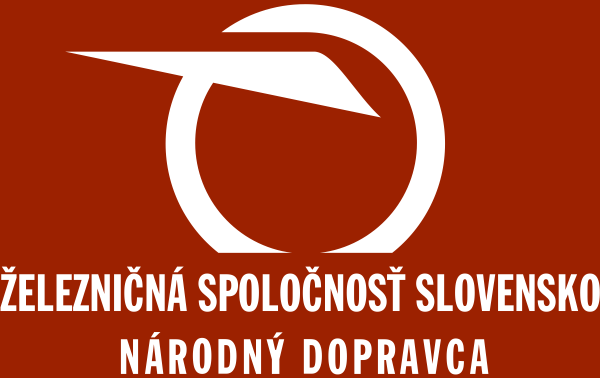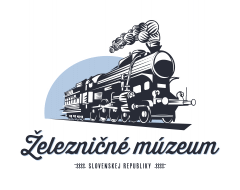Vysokorýchlostné a naklápacie vlaky
V ekonomicky vyspelejších krajinách (ich počet mierne stúpa) už niekoľko desaťročí po rekonštruovaných štandardných tratiach premávajú vlaky s naklápacou skriňou (ETR, ICT, Talgo); a najmä po špeciálnych novobudovaných tratiach výhradne pre osobnú dopravu, premávajú vysokorýchlostné vlaky (TGV,ICE, Šinkansen).
Definícia pojmu: Vysokorýchlostný vlak - vlak idúci aspoň po časti trate rýchlosťou minimálne 250 km/h (norma UIC) - novinári v krajinách V4 hovoriaci o "vysokorýchlostných" vlakoch a tratiach, príp. používajúci jazykový nezmysel "rýchlovlak" pre trate a vlaky pre rýchlosť 160 km/h (ŽSR/ZSSK/ČD) a 200 km/h (MÁV/PKP), dokazujú len svoj amaterizmus a neznalosť problematiky. 
Vývoj súprav i tratí s ich prevádzkou postupuje neustále míľovými krokmi, a tak tu očakávam poznatky od všetkích prispievateľov.
Niektoré údaje o nich v slovenčine je možné nájsť tu: http://www.rail.sk/arp/ . 
 a pekne intro
a pekne intro 

 No ta stranka sa vola preto TGV16 lebo je to cislo rekordnej jednotky, este tej prvej co spravila 380 km/h v 80. rokoch. A SNCF ju chce dat do noveho nateru a to je peticia za zachovanie rusnov v oranzovom povodnom natere.
No ta stranka sa vola preto TGV16 lebo je to cislo rekordnej jednotky, este tej prvej co spravila 380 km/h v 80. rokoch. A SNCF ju chce dat do noveho nateru a to je peticia za zachovanie rusnov v oranzovom povodnom natere.  Je tam aj viac videii, zo vsetkych rekordov na tej stranke... Sak snad si natrafil
Je tam aj viac videii, zo vsetkych rekordov na tej stranke... Sak snad si natrafil 
Vsimol som si.








Nasledne som si stiahol celu URL http://tgv16orange.free.fr/ (Zbynek, rk_kn:) aj ked je len vo FR, ale zajima ma to, tak som sa snazil pochopit obsah.
Technicke charakteristiky rekordu TGV Est:
Caractéristiques Techniques pour ce record :
Caténaire [Tension à vide] (napetie v troleji) = 31 kV (au lieu de 27,5 kV)
Caténaire [Tendue à] (sila napnutia troleja) = 4000 daN (au lieu de 2600 daN)
Motrices = 2 motrices POS modifiées (roues de plus grand diamètres, panto avant caréné, panto arrière seul au captage du courant)
Rusne = 2 rusne TGV POS s technickymi upravami (dvojkolesia s vecsimi diametrami, zmeny so zberacmi)
Voitures = 3 voitures Duplex modifiées (les 2 bogies d'extrémité de chaque voiture sont motorisés comme sur le futur AGV d'Alstom)
Vozne = 3 vozne TGV Duplex poznamene (dve napravy na prvych voznoch su tiez pohanane podobne ako na buducom AGV)
Puissance Moteur Totale (uplny vykon trakcnych motorov)= 12,8 MW
[bSkusky:
Essais:
Dates = du 15 Janvier au 14 Mars 2007, du lundi au vendredi (15 janurar; 14 marec 2007 od pondelka do piatku)
Lieu = de la gare la Meuse à la gare de Champagne sur la voie paire sur 100 km environs (Miesto = zo stanice Meusedo stanice Champagne na dvojkolajnej trati dlzky asi 100 km)
Vitesse "officiellement" annoncée (oficialne ohlasovana rychlost rekordu) = 540 km/h (pozn.: uz teraz je prekonana neoficialnym rekordom!)
Vitesse visée (cielova rychlost rekordu) = 600 km/h
Video zaber z rekordu:
http://tgv16orange.free.fr/videos/TGV%204402.mpg
Ilustracny zaber, jednotka TGV POS pri testoch, v rychlosti okolo 500 km/h




Moje "nepreklady" zapricinuje aj mizerna jazykova zdatnost.

Že tam nic (nebo skoro nic) není, má dvě příčiny:
1. Ty ani nikdo (nebo skoro nikdo) jiný tam o ŽSR nic nedá,
2. mnohá nádraží slovenská mají samostatná témata.
Přece nemůžeš chtít, aby Moravák v Čechách žijící dával příspěvky ze Slovenska na slovenské stránky - když je sem nedají domorodci...

Jinak si sem dávej příspěvky třeba v jazyce zulu, když máš potřebu. Jen jsem vyjádřil svůj názor na margo Tvé časové zaneprázděnosti, na kterou se odvoláváš (opakovaně).

A abych nebyl off topic, tak důvěrně sdělím, že momentálně Evropou uhání několik vysokorychlostních vlaků.


Mnohi (aj ja) ocenuju, ak sa infos z mnohych zdrojov daju zohnat na jednom mieste. Len masochista (asi Ty) sam seba trapi (prehladavanim stoviek servrov).
Ty ostatní jen odrazuješ, aby Tebou takto znešvařovaná téma "Nadrazi ..." vůbec navštěvovali, protože tam zpravidla o zst. ZSR nic čitelného nenajdou.
Nemyslím si, že eurobčanství musíš dokazovat zrovna tímto způsobem.
Kdo je mocen cizích jazyků a zajímá se o Tebou prezentované věci, tak si je najde v příslušných zdrojích. Ty ostatní jen odrazuješ, aby Tebou takto znešvařovaná témata vůbec navštěvovali, protože tam zpravidla nic čitelného nenajdou.

Ultranacionalistov je v EU cca 10 %, preto musia robit velky cirkus, aby si ich niekto vsimol; ale i tak ich ma ostatnych 90 % v
 .
. 
Vacsina posudzuje informaciu podla obsahu, nie "obalu" ( ja sa snazim "dekodovat" zaujimavu info aj v IT/ES/FR, i ked z nich viem velke ....)
 .
.
The 9·8 km Villarrubia de Santiago - Santa Cruz de la Zarza section has been awarded to Copasa for €24·5m, while a joint venture of Conacon and Sando is to build the 11·7 km between Santa Cruz de la Zarza and Tarancón for €14·7m. On the branch to Alacant, the Spanish cabinet has given its approval for tenders to be called for civil works on the 10 km La Alcoraya - Alacant section within a budget of €105·9m, as well as 7·3 km through Albacete where the budget is €70·2m.
On the Madrid - Barcelona route, tenders are to be called within a budget of €16·6m for a contract to undertake tracklaying on the 12·6 km between Sant Joan Despí and Barcelona Sants, including 11·3 km of slab track. ADIF has brought into service a double-track 17·6 km connection to the port of Barcelona from Castellbisbal to Can Tunis, running parallel to the high speed line for 12 km and laid to both 1 668 mm and 1 435 mm gauges.
Presenting the first review of the PEIT transport infrastructure plan on February 14, Spanish Prime Minister José Luís Rodríguez Zapatero said that 326 km of high speed lines had been brought into service since his government came to power in March 2004. Investment in new rolling stock totalling €2bn had seen 81 trainsets and 28 locomotives put into service, while orders had been placed for 427 trainsets and 100 freight locos.
http://www.railwaygazette.com/ , 01 March 2007 - ON FEBRUARY 8 President Néstor Kirchner launched tendering for the second high speed line planned in Argentina, linking Buenos Aires with Mar del Plata. It is hoped to complete tendering this August, including the award of contracts for civil works, tracklaying, electrification, signalling and telecommunications as well as the supply of rolling stock, in order for the route to open in 2009.
It is expected that trains operating at up to 250 km/h will cut the journey time to just over 2 h, with at least two intermediate stations planned at Chascomús and Dolores. The fastest timing on the 399 km Buenos Aires - Mar del Plata route operated by Ferrobaires is currently 5 h 07 min, and responsibility for passenger services in the province of Buenos Aires is to be transferred from the provincial to the federal government.
Bidders will be expected to provide finance, as with the project to build a high speed line between Buenos Aires, Rosario and Córdoba. At the request of the three shortlisted consortia (RG 10.06 p644), the government has postponed until April 10 the deadline for presenting financial bids to provide 50% of the total cost now estimated at up to US$1·35bn. Delays in rescheduling the repayment of Argentina's $6bn debt to the Paris Club of lending countries are reported to be complicating the raising of private and public finance by foreign bidders including Alstom, CAF and Siemens.
H Herso has been awarded a 117·4m pesos contract to undertake tracklaying, platform construction and other railway works for the new transport interchange in Mar del Plata (RG 2.07 p62).
http://www.railwaygazette.com/ , 01 March 2007 - BIDS ARE due to close around February 28 for supply and maintenance of a fleet of 25 high speed trains, with an option for up to 10 more sets. A group of four leading Italian businessmen is planning to launch services on three domestic routes in competition with Trenitalia.
If it succeeds, Nuevo Trasporto Viaggiatori would become Europe's first private operator of high speed trains. NTV is led by former FS General Manager Giuseppe Sciarrone, who currently heads open-access freight operator Rail Traction Co. His partners are Fiat and Ferrari President Luca di Montezemolo, exhibition company entrepreneur Diego de Lavalla and Gianni Punzo who heads Napoli-based logistics group Interporto Campano.
Under a law of December 2000 liberalising Italian domestic passenger services 'in a situation of reciprocity', NTV was awarded an operating licence in mid-February, and is negotiating a framework agreement on paths and depot sites with RFI. Subject to getting prices for the trains, Sciarrone hopes to launch the marketing brand name formally in June and start running in spring 2010.
Using TSI-compliant trains around 200 m long carrying up to 500 passengers, NTV plans to begin with three core routes. A near-hourly service would link Milano and Napoli, with alternate trains extended north to Torino and south to Salerno. The second route would link Roma, Bologna and Venezia, whilst the third would connect Roma, Napoli and Bari.
Sciarrone says the partners would also be interested in running less-profitable routes if NTV can reach agreement with the government on compensation terms. He believes that competition will encourage Trenitalia to raise its game, growing the market overall as has happened in the freight sector. And having the President of Ferrari on board will give rail extra glamour, he suggests.
Another organisation called Rail 1 has also declared its interest in Italian high speed services and is understood to be discussing a version of the TSI-compliant Velaro with Siemens.
Sieť vysokorýchlostných tratí v Taliansku: http://www.rail.sk/etr/tav01.htm
 .
.
http://www.railwaygazette.com/ , 01 March 2007 - AN UNOFFICIAL world rail speed record of 554·3 km/h was set in France on February 13 during trials on TGV Est. This comprehensively beats the 515·3 km/h rail record that SNCF established on May 18 1990 and surpasses the 552 km/h achieved by the Japanese experimental maglev trainset MLX01 at Yamanashi on April 14 1999.
The run by a five-car double-deck TGV uprated to 20 MW formed part of an SNCF-RFF-Alstom joint research programme into higher speeds (RG 1.06 p17) that is expected to culminate on April 5 with an 'official' attempt to lift the record by 10% to a speed of around 570 km/h.
SNCF Chief Executive Guillaume Pepy sees higher speeds as an essential element in making Europe's railways more competitive, suggesting on February 8 that 'today we have the opportunity to shape the industry at a critical time'. Giving the annual Sir Robert Reid lecture to the Chartered Institute of Logistics & Transport in London, he pointed out that there was 'a colossal level of investment going into high speed lines now', estimating that k150bn would be spent over the next 15 years.
Evidence from several countries indicated that construction of high speed lines increases rail's share of the rail+air market by a factor of three, he confirmed. With world oil reserves expected to last 43 years and traffic congestion estimated to waste 1% of Europe's entire GDP, or €90bn a year, Pepy forecast that high speed rail would play a greater role in the future mobility mix. With the journey time threshold for effective competition with air moving from 3 h to between 4 h and 4½ h, 'when a journey by train is less than 4½ h, our share of the market is over 50%.'
Quoting Air France Chairman Jean-Cyril Spinetta's view that 'it is the TGV which is the low-cost carrier', Pepy said an aggressive pricing policy and yield management had enabled SNCF to increase its customer base by 12% in the first year and improve its operating margin by 8%. Fares for the 750 km journey from Paris to Marseille now range from €25 to €130, and the average load factor of the 680 TGV services operated each day has reached 71%.
To meet increasing demand, Pepy expects SNCF to double its 430-strong TGV fleet within 25 years. Orders already placed will see 15 TGV Duplex sets delivered each year until 2009, but after that he is looking to move to a totally new design. 'We have an incredible opportunity to rethink our strategy', he said, questioning whether to stick with articulation, and whether to switch from separate power cars to distributed traction. A clear target is reliability. Today the TGV Duplex fleet averages 'six incidents per million km, which is good. But 60 times worse than Shinkansen'.
SNCF plans to order 300 to 400 new trains for delivery in 2015-50, and Pepy said the next invitation to tender would be valued at k6bn to k9bn. The trains will be designed for 320 or 350 km/h operation, but that is not the limit of his vision. Noting that 'Paris - Lyon is now almost at saturation point' with a realistic limit of 13 trains/h each way, he suggested that 'we should ask how to double line capacity in the next 20 years'. One option might be to build a second high speed line, where 360 km/h operation 'would allow a time saving of 25%, moving from 2 h to 1½ h', which would in turn generate more traffic.
He confirmed that the current research is aimed at a commercial speed of 360 km/h, which he compared to JR East's Fastech programme. 'So is the next step 360 km/h? Perhaps.' But his comments suggest that a long-term vision of a 500 km/h TGV is already starting to take shape.
http://www.railwaygazette.com/ , 01 March 2007 - REPEATED ATTEMPTS to build high speed lines in North America may have produced absolutely nothing to date, but Californians like to be different. Plans for a $37bn network carrying 350 km/h trains between Sacramento, San Francisco, Los Angeles and San Diego appear to be making some progress. On January 29, the board of the state's High Speed Rail Authority authorised expenditure approaching $300m on engineering design contracts.
Arup won a five-year contract for environmental studies and engineering on the Fresno - Palmdale section, in a joint venture with URS and Hatch Mott MacDonald. Sacramento - Fresno went to DMJM Harris, and HNTB won Orange County - San Diego. Studies are already under way for the Palmdale - Los Angeles - Orange County sections. With work on the 300 km/h line between the Channel Tunnel and London all but complete, Arup was keen redeploy some of its 200 engineers working on High Speed 1 to California.
Unfortunately, Governor Arnold Schwarzenegger wants to slash HSRA's budget for next year from $14m to a negligible $1·2m. Executive Director Mehdi Morshed had asked for $103m, and his protest to the governor was 'there is really no public purpose for me and my staff to be in office unless you want to move forward with the project'.
State legislators must now decide whether to support a November 2008 referendum vote on a $9·95bn bond issue to fund the network, having twice delayed rail bond ballots in 2004 and 2006. Senator Dean Florez, whose mother is an HSRA director, observed wryly 'because people haven't seen it, touched it or ridden on it, most people - at least in the legislature - don't think it can be done'.















http://www.eurailpress.com/ , 16.03.2007 - Slavnostne otvorenie LGV Est ( http://www.lgv-est.com/ ) sa uskutocnilo 15.3.2007 vecer pri ohnostroji.
Video od Spiegel-Online : http://www.spiegel.de/videoplayer/0,6298,16862,00.html . Bezna prevadzka zacne 10.6.2007 .
Frankreich und die europäische Kommission eröffnete gestern Abend mit einen eindrucksvollen Feuerwerk . die europäische Hochge- schwindigkeitsstrecke LGV Est . Die Arbeiten wurden von der Europäischen Union mit 241 Mio. EUR bezuschusst.
Die neue Strecke, auf der ab Juni 2007 die Fahrzeit zwischen Paris und Straßburg nur noch 2 Std. 20 Min. betragen wird, ermöglicht außerdem Hochgeschwindigkeitsreisen zwischen Frankreich, Deutschland, der Schweiz und Luxemburg. Die bereits gebauten 300 km zwischen Paris und Beaudrecourt sind der erste Abschnitt einer europäischen Magistrale, die auf 1500 km Länge die Städte Paris und Bratislava über Straßburg, Stuttgart, München, und Wien miteinander verbinden wird.
Der TGV Est verbessert die Verkehrsanbindung Ostfrankreichs und verkürzt die Reisezeiten um die Hälfte. So werden die Fahrzeiten von Paris nach Straßburg nur noch 2 Std. 20 Min., nach Metz und Nancy 1 Std. 30 Min. und nach Reims 1 Std. 45 Min. betragen. Für direkte interregionale Verbindungen wurden drei neue Bahnhöfe gebaut, Champagne-Ardenne, Meuse TGV und Lorraine TGV. Darüber hinaus ermöglicht die neue Strecke Hochgeschwindigkeitsdienste nach Deutschland, in die Schweiz und nach Luxemburg. Die Fahrzeit zwischen Frankfurt und Paris beispielsweise wird anstatt wie heute 6 Std. 15 Min. nur noch 3 Std. 45 Min. betragen.
Mit einem neuen Geschwindigkeitsrekord von 547 km/h und Reisegeschwindigkeiten von 320 km/h stellt diese schnellste Strecke Europas ein Wunder der Technik dar. Auch der Bau übertraf sämtliche Rekorde: So mussten 60 Mio. qm Erde bewegt, 12 Mio. t Material transportiert sowie 338 Brücken, Viadukte und Wilddurchlässe gebaut werden. Wenn die Strecke am 10. Juni 2007 in Betrieb genommen wird, werden pro Jahr 11 Millionen Reisende erwartet.
An der Finanzierung der Strecke waren 22 Partner beteiligt. Aus dem Haushalt für transeuropäische Verkehrsnetze hat die Europäische Union im ersten Arbeitsabschnitt 230 Mio. EUR investiert, was 7 % der Gesamtkosten entspricht. Mit diesem ausgesprochen hohen Gemeinschaftsbeitrag gehört der LGV Est zu den von der EU bislang am stärksten geförderten Verkehrsvorhaben.
Bis 2012 sollen die letzten gut 100 km zwischen Baudrecourt und Straßburg gebaut werden. Dazu ist ein 4 km langer Tunnel durch die Vogesen notwendig.
(Kedze casu a znalosti jazyka povodneho textu mam malo, preklad neuvadzam, resp. len velmi skrateny. Kto vsak povazuje obsah prispevku aspon intuitivne za zaujimavy, si jeho preklad obstara - programov je dost - ja by som musel urobit to iste. Povazujem za lepsie uvedenie prispevku v tejto forme, ako ziadne neuvedenie.)